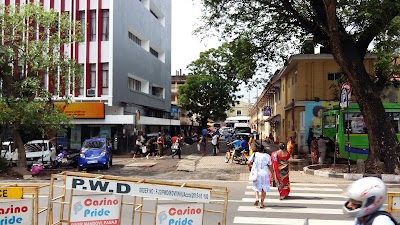Gao Market (Marché de Gao)
Overview
Introduction to Gao Market
Nestled in the heart of the Gao Region in Mali, Gao Market serves as a vibrant window into the local culture, commerce, and daily life. This enthralling destination is steeped in history and pulsating with the energy of everyday activities, making it a must-visit for travelers seeking an authentic Malian experience.
A Historical Perspective
The city of Gao boasts a rich history in West Africa, having been established around the 7th century. It became a vital commercial and cultural center due to its strategic location along the banks of the Niger River. As the capital of the Songhai Empire—one of Africa's largest and most influential empires—Gao's historical legacy is still palpable today, particularly within the lively atmosphere of its bustling market.
A Living History
Stepping into Gao Market is akin to walking through the living history of Mali. For centuries, it has served as a pivotal center for trade, where merchants from across the region converge to exchange goods, ideas, and stories. This dynamic environment offers visitors an unparalleled opportunity to observe and engage in age-old traditions that continue to thrive in Gao.
Diverse Offerings
Gao Market is celebrated for its diverse range of goods. From fresh produce and aromatic spices to intricate handicrafts and vibrant textiles, the market is a visual feast of colors and textures. Visitors can discover Tuareg jewelry, beautifully woven baskets, traditional fabrics, and so much more. Each item tells a unique story about the artisans behind them, ensuring a one-of-a-kind shopping experience.
Connect with the Locals
One of the most rewarding aspects of visiting Gao Market is the opportunity to interact with the locals. As a social hub, the market is where people gather not only to buy and sell but also to connect with one another. Friendly vendors are often eager to share their stories and the traditions behind their goods, offering valuable insights into the daily lives and cultural practices of the people of Gao.
Culinary Delights
Food plays a central role in the market experience, with the enticing aroma of freshly prepared meals wafting through the air. Visitors are tempted to sample local culinary delights, such as rice and fish stews served with spicy sauces and freshly baked bread. Street food vendors offer a variety of delectable snacks, allowing tourists to savor the authentic flavors of Mali in a lively setting.
Cultural Celebrations
Gao Market is not solely about commerce; it also serves as a venue for the community to celebrate and uphold its cultural heritage. Throughout the year, the market hosts various festivals and events that highlight the music, dance, and art of the region. These celebrations create a festive atmosphere and deepen visitors' understanding of the vibrant culture that defines Gao.
Nearby Historical Sites
For those intrigued by history and architecture, the market's proximity to significant landmarks like the Askia Tomb enhances its appeal. A UNESCO World Heritage Site, the Askia Tomb is the final resting place of Askia Mohammad I, one of the most distinguished emperors of the Songhai Empire. Exploring this site provides context and depth to Gao's historical significance, enriching the overall market experience.
Conclusion
In summary, Gao Market in the Gao Region of Mali is a dynamic and historically rich destination that offers an authentic taste of local life. Its long-standing role as a center of commerce and culture makes it an exceptional place for foreign tourists to explore. With its vibrant atmosphere, diverse range of goods, and the warm hospitality of its people, a visit to Gao Market promises to be a memorable and enriching experience. Whether you're a history enthusiast, a food lover, or simply curious about different cultures, Gao Market has something special to offer everyone.






